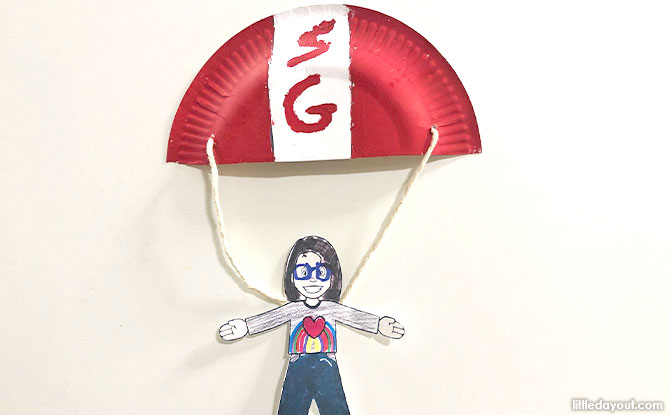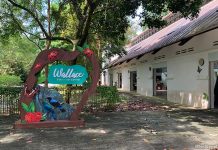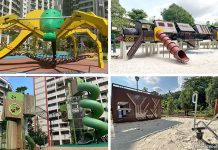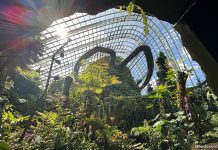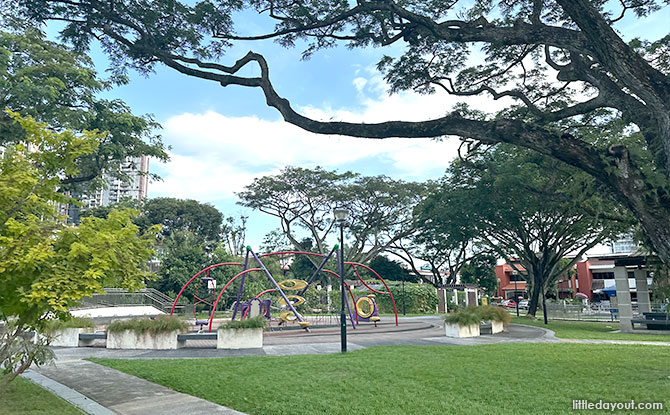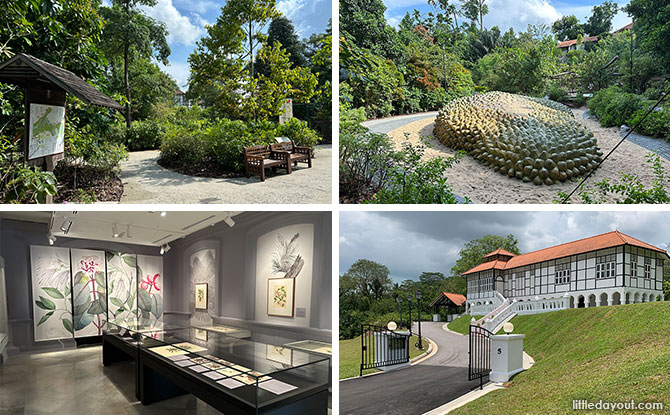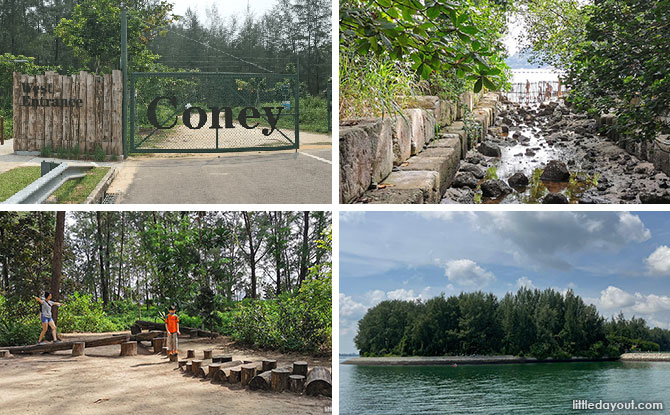
Once a millionaire’s island and wakeboarder’s paradise, Coney Island used to only be accessible by boat. On 10 October 2015, this changed with the opening of two bridges connecting the 50-hectare island to mainland Singapore, making it more easily accessible to the general public.
Previously known as Pulau Serangoon or Serangoon Island (it is still marked as Serangoon Island on Google Maps), the island was once owned by the Aw brothers of Tiger Balm fame.
The island changed hands in the 1950s when it was sold to Indian businessman Ghulam Mahmood who harboured intentions of transforming it into a resort in the style of the amusement park at Coney Island, New York.
These plans fell through and it found its way back into the possession of the Singapore government in the 1970s.
BE PSLE-READY: Join Expert Educators for Revision Boosters to Empower P6 Students
BURP: Join the Sound Collector on a Whimsical Chase at Esplanade – Theatres on the Bay
WEEKEND IDEAS: Get Inspirational Ideas of Things to Do
This tranquil island, even though just one hundred metres away from Singapore at its closest point, the island has had relatively few visitors. Those who paid a visit were weekend wakeboarders coasting the island’s waters and weary Outward Bound School sea expedition kayakers in need of a rest stop.
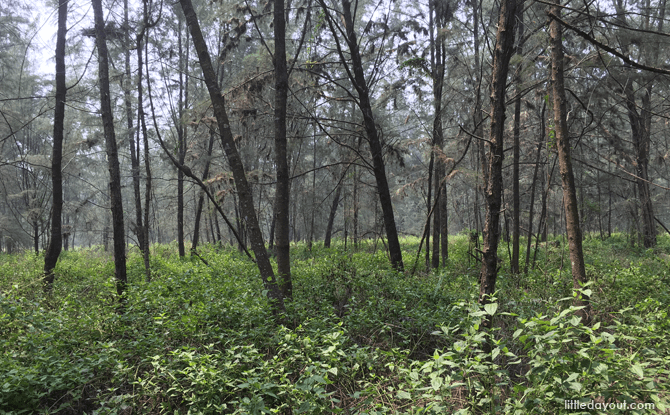
Today, the Casuarina-covered island in northeastern Singapore welcomes visitors to its rustic charms. NParks, which manages Coney Island Park, had chosen to preserve the island’s natural character and emphasized environmental sustainability in its development. And, that is a good thing. This means that despite being just 500 metres away from Punggol Settlement on the western end of the island, Coney Island Park still feels like a world away from urbanity.
Unfortunately, earlier in 2021, it was announced that Outward Bound School would be building a facility on the eastern end of Coney Island Park. Construction has already started on the eastern end of the island.
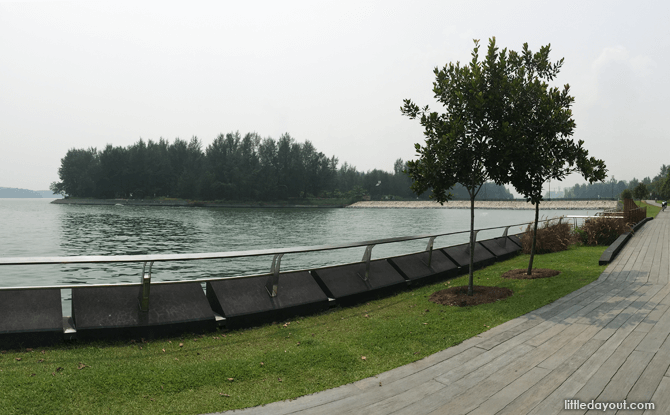

If you are planning a visit to Coney Island Park any time soon, here are ten things you should know about Coney Island Park before paying a visit.
#1 The Easiest Way to Coney Island Park is from Punggol Point Park (End of Punggol Road)
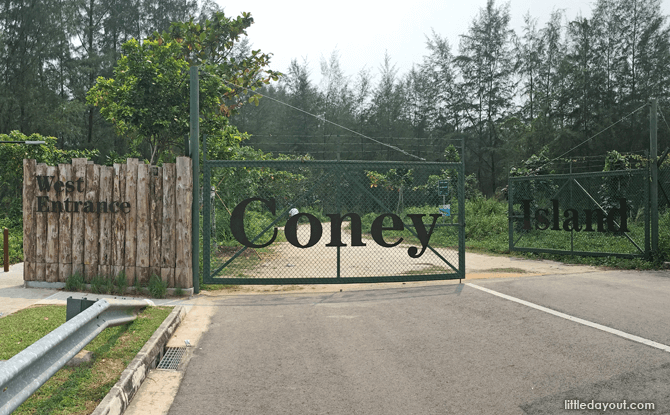

Two bridges connect Coney Island Park to mainland Singapore. The entrance closest to a car park is the West Entrance at the western edge of the island. It is only 500 or so metres from Punggol Settlement and Punggol Point Park to the West Entrance.
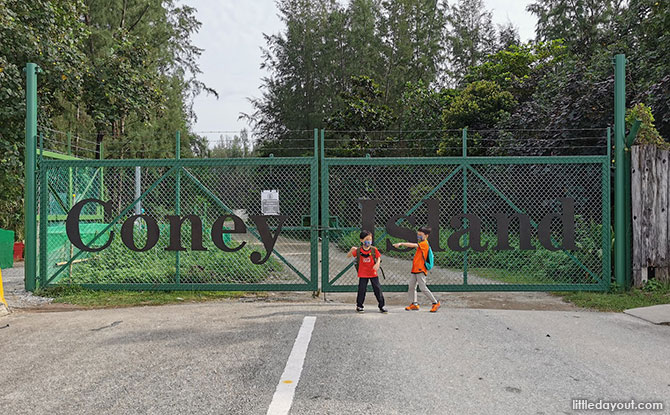
The East Entrance connects to Lorong Halus and Pasir Ris Industrial Drive 6.
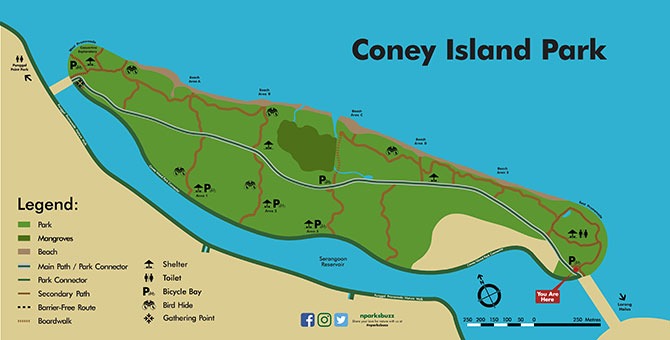
Here is a map of Coney Island Park, showing the West and East entrances.
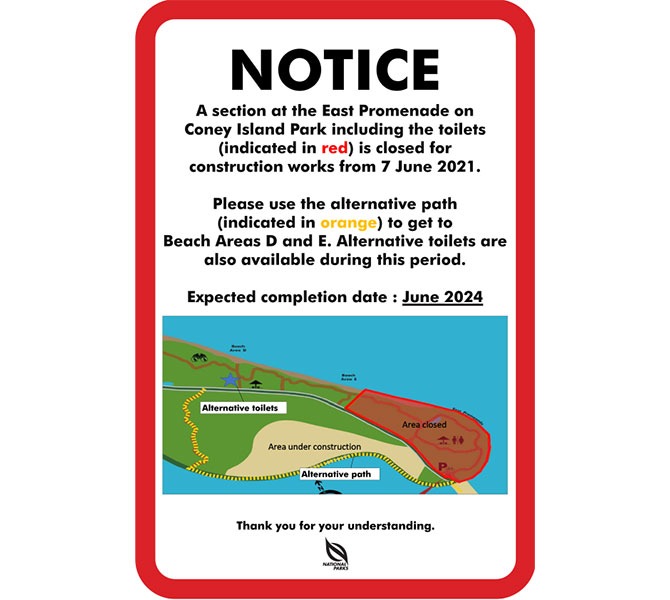
However, do note that due to the construction of the OBS facility, sections of the island on the eastern end, including the East Promenade, are closed off. There are alternative paths available.
#2 You Can Enter Coney Island Park on Foot or Bicycle
Walk or cycle on to the island. We even spotted folks on inline skates.
The island’s Main Path down the centre of the island and is made of gravel and dirt. We wouldn’t recommend bringing prams into the island, unless you are planning to only visit the Promenade and Casauarina Exploratory areas.
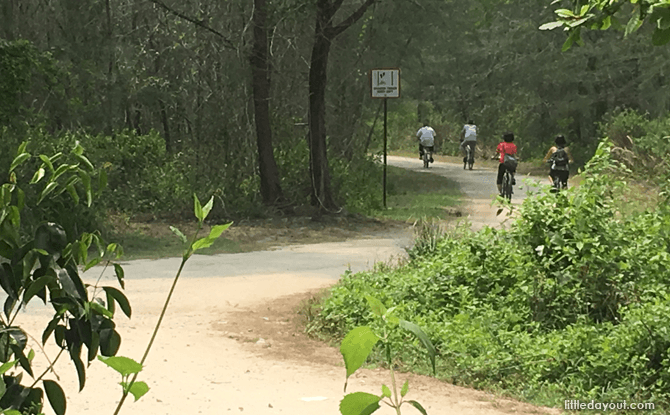

Cycling is highly recommended as you can quickly navigate various trails very quickly.
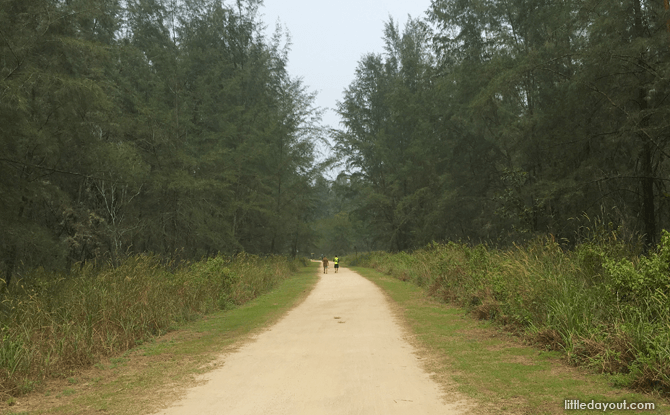

It is also generally flat ground hence children will find it fairly easy to cycle here.
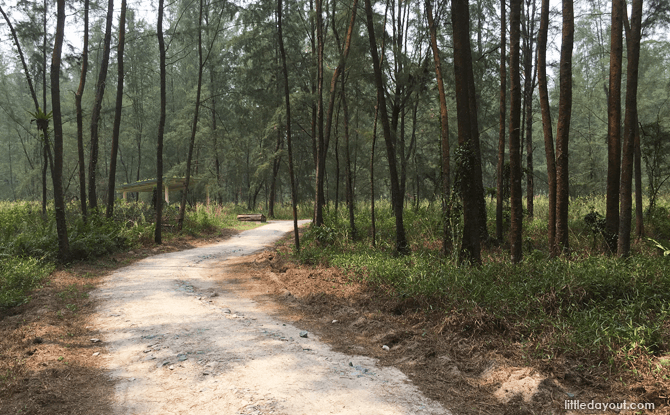

Earth paths run off from the Main Path to the island’s Beach Areas.
#3 Nearest Parking to Coney Island & Bike Rental
The nearest “legal” parking is actually at Punggol Settlement carpark, 700 metres away from the West entrance.
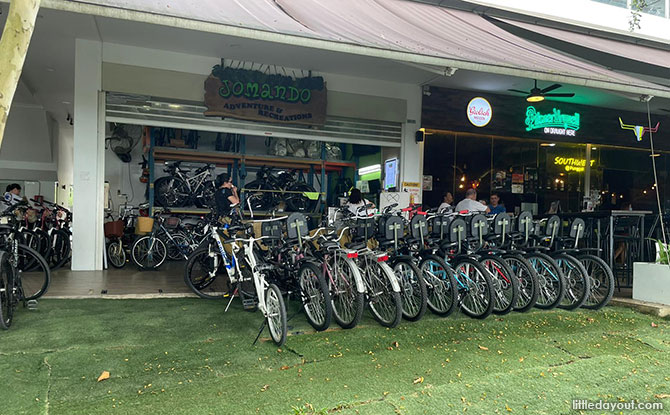
This is also where you can rent bicycles or pedal go-karts. Punggol Settlement is a convenient option for families looking a bite before or after visiting Coney Island since there are no food or drink stalls on Coney Island. There are a few restaurant here including the famous “House of White Bee Hoon” as well as a small 7-Eleven convenience store.
Alternatively, if you are thinking of heading to East entrance of Coney Island, you can park around Punggol East and cycle (recommended) or walk to Lorong Halus via the red bridge and up towards the East entrance. This can be quite a distance.
#4 Stroll Along Coney Island Park’s West Promenade
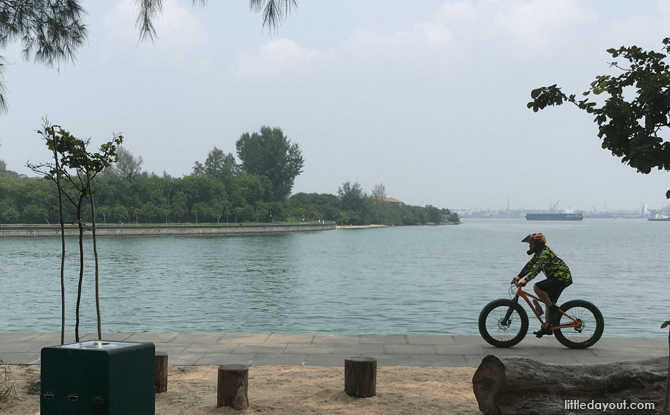

A publicly accessible promenades can be found at the western end of the island. The paved areas provide a spot to enjoy the views of passing ships and Johor’s shoreline without having to venture too far into the island.
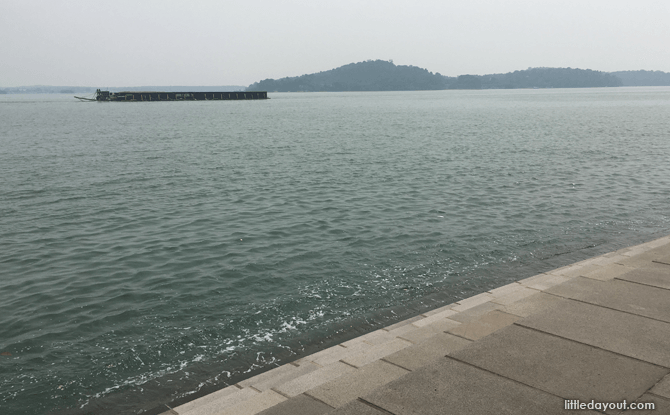
At the West Promenade, the curious can venture down some steps for a closer look at the water’s edge.
#5 Play at the Casuarina Exploratory Nature Playgarden
Casuarinas are twiggy trees that can grow up to 20 to 30 metres tall. Coney Island Park is covered with these slender, wispy trees with distinct cone-like fruit. In fact, one could imagine that the island’s name reference these hardy, errmm…coney fruit.
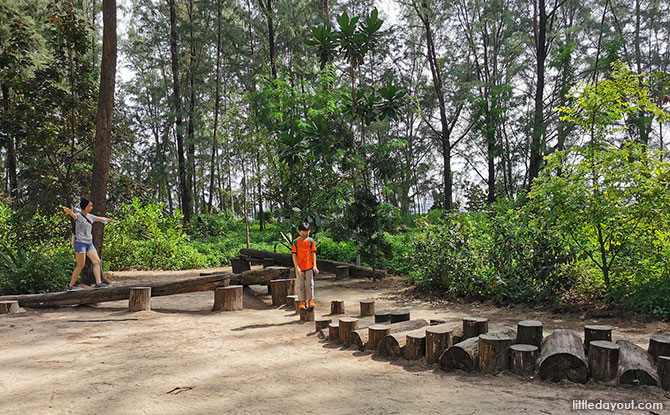
Casuarina Exploratory on the western end of the island is dedicated to these trees. Created with wood from uprooted Casuarina trees, this is the closest thing to a playground you will find on the island.
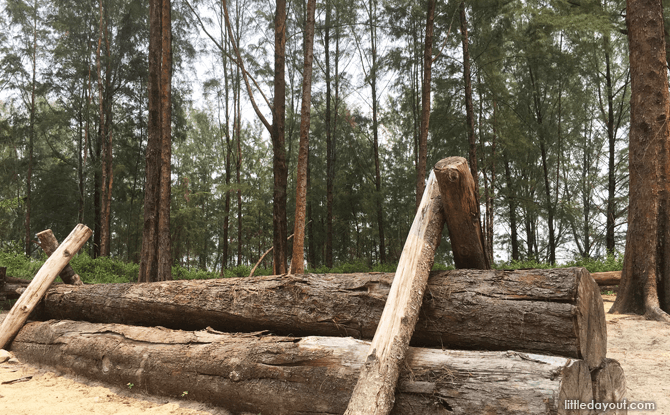

There are wooden bridges to step across and stepping stones to hop along and little triangular log fences for adventurous ones to climb over.
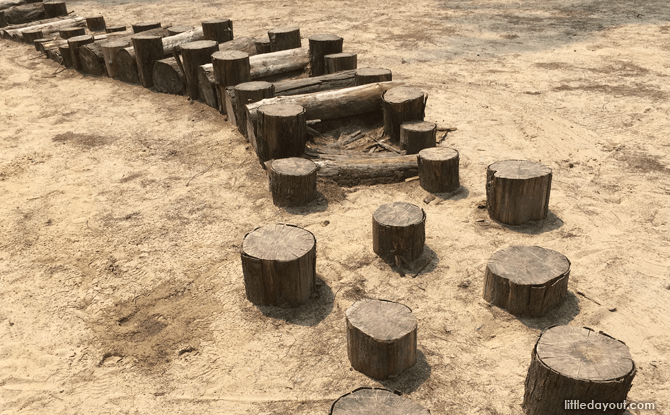

Plenty of fun for kids to have a go at.
#6 The Island’s Five Beach Areas are “Themed”
Coney Island Park has five beach areas. Beach Areas A to E look out towards Pulau Ubin and are accessible via earth tracks from the Main Path.
Unlike the promenade, these small beach areas are more natural openings to the sea. They have been left uncleared and therefore are not very big. Beach Area A is the most easily accessible to visitors and you can expect to encounter fewer people the further east you go.
Each beach has been given a different “theme”. At Beach Area A, the theme is Back Mangrove Trees. Here, try spotting the endangered Dungun tree whose ellipsoid fruit that resembles the head of ‘Ultraman’.
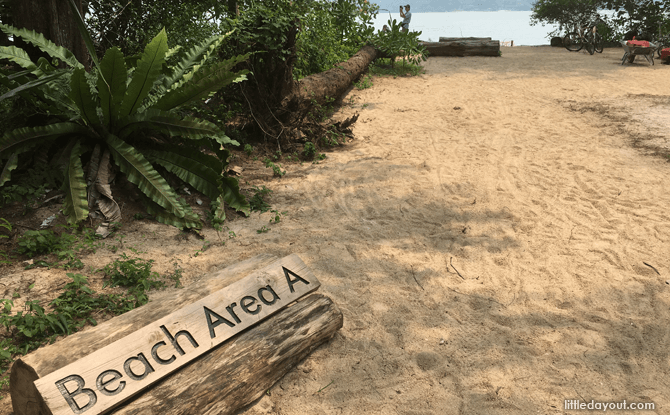

At Beach Area B, the focus is on Beach Front Shrubs and Coastal Climbers. Look out for the endangered Pink-eyed Pong Pong with its red to pink-centred flowers.
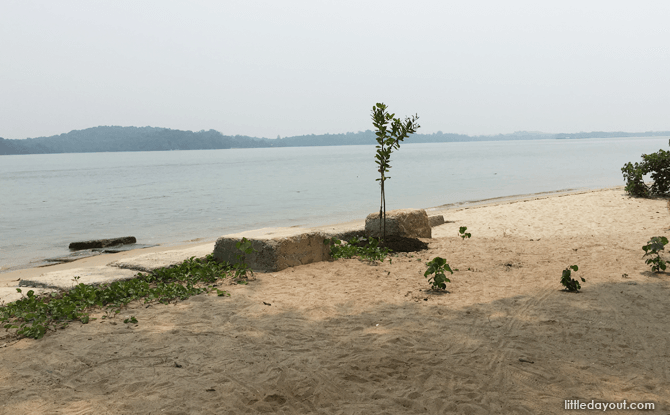
Beach Areas C, D and E are themed Rare Coastal Trees, Coastal Hill Forest Trees and Beach Front Trees respectively.
#7 Walk the Mangrove Boardwalk
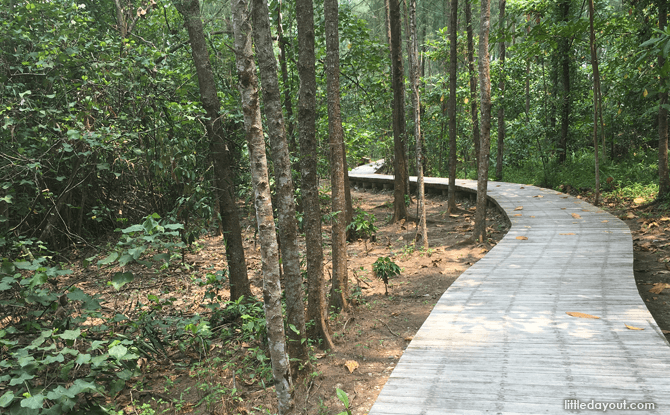

On the way to Beach Area C is a boardwalk that cuts through a mangrove forest. The forest has four designated demonstration plots which have been planted with coastal forest trees to add diversity and attract fauna to the area.
Look out for tree-climbing crabs, Rodong snail and giant mudskippers here.
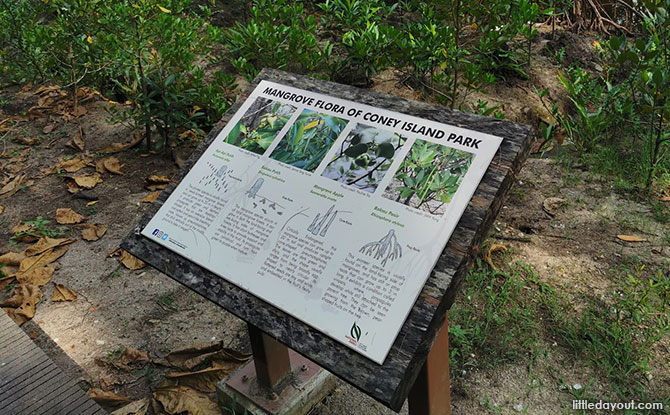
This is a good opportunity to show the children the kind of roots Mangrove plants have and the role of mangroves in the ecosystem.
Do also watch out for bikers along the stretch, especially those that do not dismount, much to our chagrin.
#8 Find the Estuary
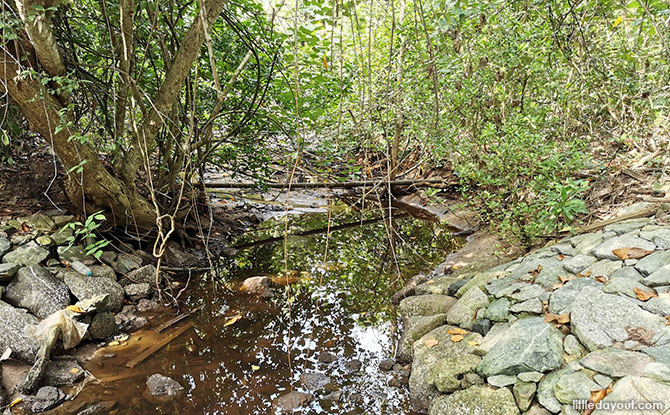
At Beach Area C lies the estuary. An estuary is a body of water found where the river meets the sea. This is also an important place for animals to find food, places to breed and stopover during migration.
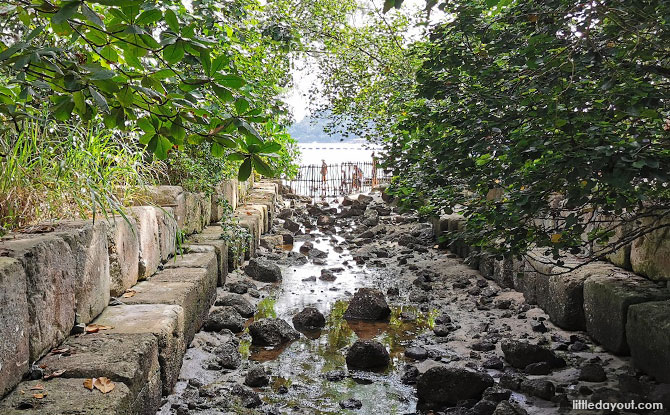
Sights here include rare coastal trees including Buah Keras Laut, Petai Belalang. At high tide, you can also spot fish like the Striped Nose Halfbeak. At low tide, look for the Rodong snail and smaller Red Chut-chut snail.
If you are looking for a rest spot, this is a cool place with shade to take a break.
#9 Try a Spot of Bird Spotting
Some of the endangered birds that have sighted on the island include the Spotted Wood-Owl, Red Junglefowl, Grey Heron and Rusty-breasted Cuckoo. It is therefore no wonder that NParks has chosen build three bird hides on Coney Island Park.
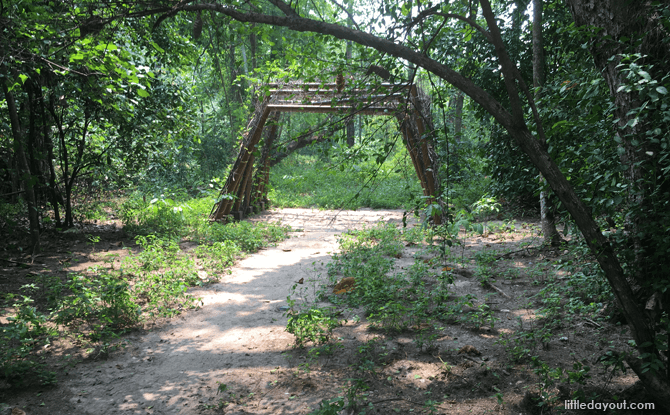

Listen out for the weaver birds, collared kingfishers, spot orioles and rose-ringed parakeets and listen out for the woodpeckers pecking away.
#10 There are Few Public Amenities on Coney Island Park
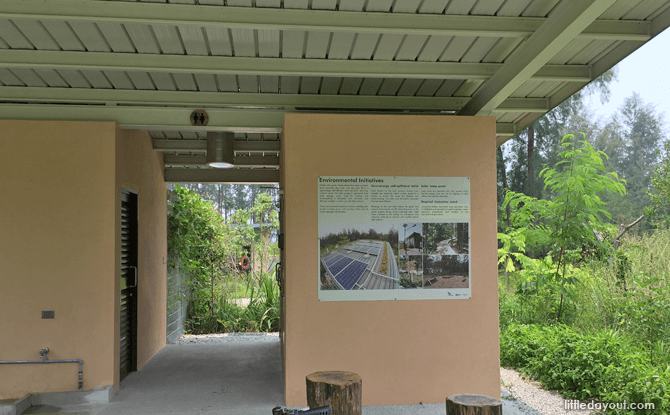

There are very few public amenities on the island. The main toilet on Coney Island Park is found at the western end of the island, 100 metres from the West entrance. It is run by solar power and rainwater is used for flushing and hand-washing.
The other toilets are potable toilets found nearer the Eastern end, near Beach Area E.
In keeping with the ideal of environmental sustainability, as far as possible, the signs, seats and even the boardwalk on the island are made from Casuarina timber from uprooted trees.
Make sure you bring along your own bottled water. There is none on the island.
A pack of plasters might be a good idea for any small scrapes you may encounter. And insect repellent too because sandflies have been reported at the beaches. It is advisable to wear long pants and covered shoes on to the island.
As there is no lighting in the park in the evenings, Coney Island Park is open from 7 am to 7 pm daily for safety reasons.
#11 Spot an Otter or Two
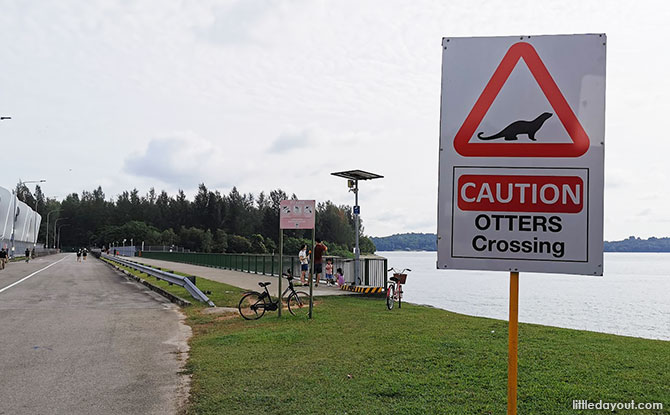
You may be lucky enough to be able to spot an otter at Coney Island! As we entered via the East entrance, there was even a sign “Otters crossing”. Can you see the creature peeking out from the bushes?
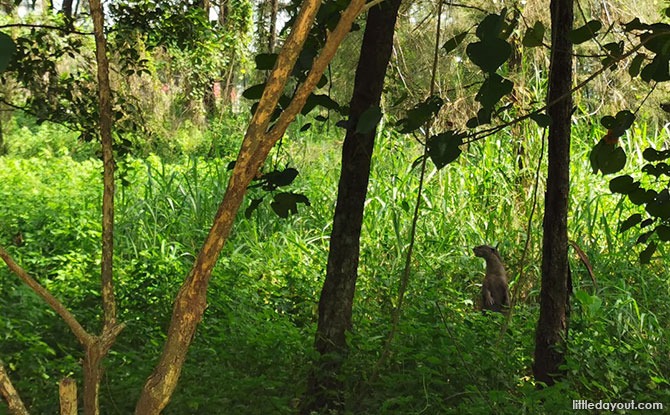
The Punggol otter family is often seen romping around Coney Island Park. It must be a breath of fresh air away from the dense urban places!
#12 Pretend you are Overseas
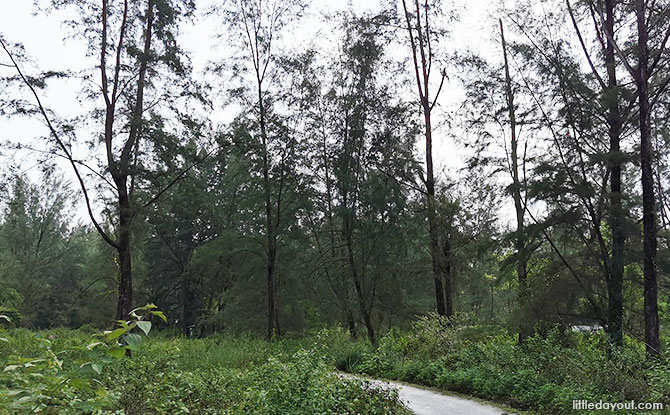
Entering Coney Island might make you feel like you are overseas enjoying a temperate climate. Immerse yourself amidst the coniferous trees in this unique part of Singapore, walk down one of the trails and just listen to the birdsong. Perhaps what everyone really needs is some fresh air, forest-bathing and a chance to slow down.
#13 Outward Bound School Construction in Progress
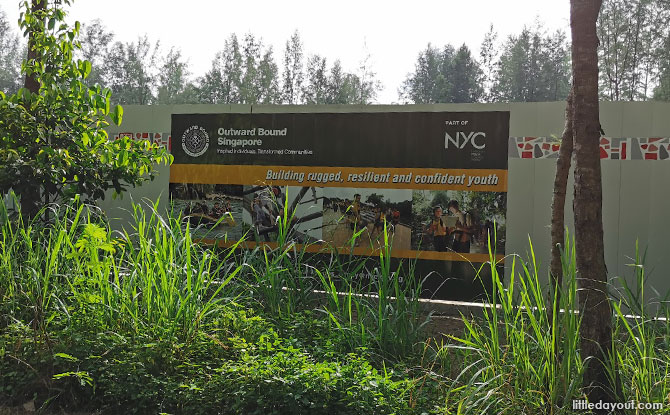
Works on the Outward Bound School on Coney Island has commenced. Hoarding on the Eastern side of the island indicates where entry is prohibited.
#14 Coney Island Used to Have a Free-roaming Cow

Well, technically, the cow on Coney Island was really a bull – a single Brahman Bull to be exact. No one knows when it decided to make the island its home but was left to wander around freely as it pleased.
On 12 October 2016, NParks announced that the beloved Coney Island cow had died. It was sedated for blood and decal samples to be taken during its annual health check by veterinarians on 28 September 2016 and could not be revived after that. Post-mortem investigations showed that it had chronic underlying illnesses and was likely to have died of lung and heart complications while sedated.
For the record, when it was alive, it was actually quite hard to spot the bull because of it liked to graze in the tall grassland areas of the island.
#15 The Haw Par Beach Villa
The Haw Par Brothers built a Beach Villa on the island when it was owned by them. After World War II, the villa was left in a state of disrepair.
It was previously off limits already after Coney Island Park reopened in 2015, but there were some who still ventured to seek it out. We believe the Haw Par Beach Villa actually sits on part of the island where the construction is ongoing.
Originally published on 12 October 2015. Updated on 23 July 2021 with additional reporting by Tan Ee Jia.





